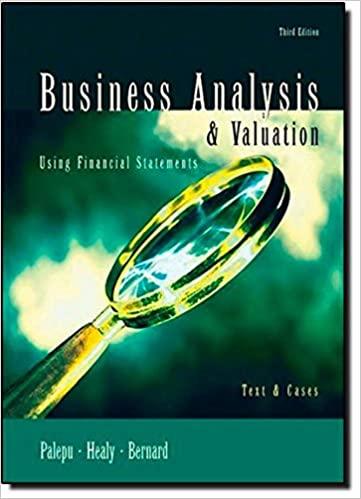Question
Need help with the calculations for these five probelems. A pension fund manager is considering three mutual funds. The first is a stock fund, the
Need help with the calculations for these five probelems.
| A pension fund manager is considering three mutual funds. The first is a stock fund, the second is a long-term government and corporate bond fund, and the third is a T-bill money market fund that yields a rate of 8%. The probability distribution of the risky funds is as follows: |
|
| Expected Return | Standard Deviation |
| Stock fund (S) | 17% | 38% |
| Bond fund (B) | 12 | 17 |
| The correlation between the fund returns is 0.13. |
| a-1. | What are the investment proportions in the minimum-variance portfolio of the two risky funds. (Do not round intermediate calculations. Enter your answers as decimals rounded to 4 places.) |
|
|
|
| Portfolio invested in the stock |
|
| Portfolio invested in the bond |
|
| a-2. | What is the expected value and standard deviation of its rate of return? (Do not round intermediate calculations. Enter your answers as decimals rounded to 4 places.) |
|
| Rate of Return | ||||||||||||||||||||||||||||||||||||||||||||||||||||||||||||||||||||||||||||||||||||||
| Expected return |
| ||||||||||||||||||||||||||||||||||||||||||||||||||||||||||||||||||||||||||||||||||||||
| Standard deviation |
| ||||||||||||||||||||||||||||||||||||||||||||||||||||||||||||||||||||||||||||||||||||||
|
| |||||||||||||||||||||||||||||||||||||||||||||||||||||||||||||||||||||||||||||||||||||||
| Assume that you manage a risky portfolio with an expected rate of return of 20% and a standard deviation of 37%. The T-bill rate is 7%. Your clients degree of risk aversion is A = 2.5, assuming a utility function U= E(r) - A. |
| a. | What proportion, y, of the total investment should be invested in your fund? (Do not round intermediate calculations. Round your answer to 2 decimal places. Omit the "%" sign in your response.) |
| Investment proportion y | % |
| b. | What is the expected value and standard deviation of the rate of return on your clients optimized portfolio? (Do not round intermediate calculations. Round your answers to 2 decimal places. Omit the "%" sign in your response.) |
|
|
|
|
| Expected return |
| % |
| Standard deviation |
| % |
Step by Step Solution
There are 3 Steps involved in it
Step: 1

Get Instant Access to Expert-Tailored Solutions
See step-by-step solutions with expert insights and AI powered tools for academic success
Step: 2

Step: 3

Ace Your Homework with AI
Get the answers you need in no time with our AI-driven, step-by-step assistance
Get Started


